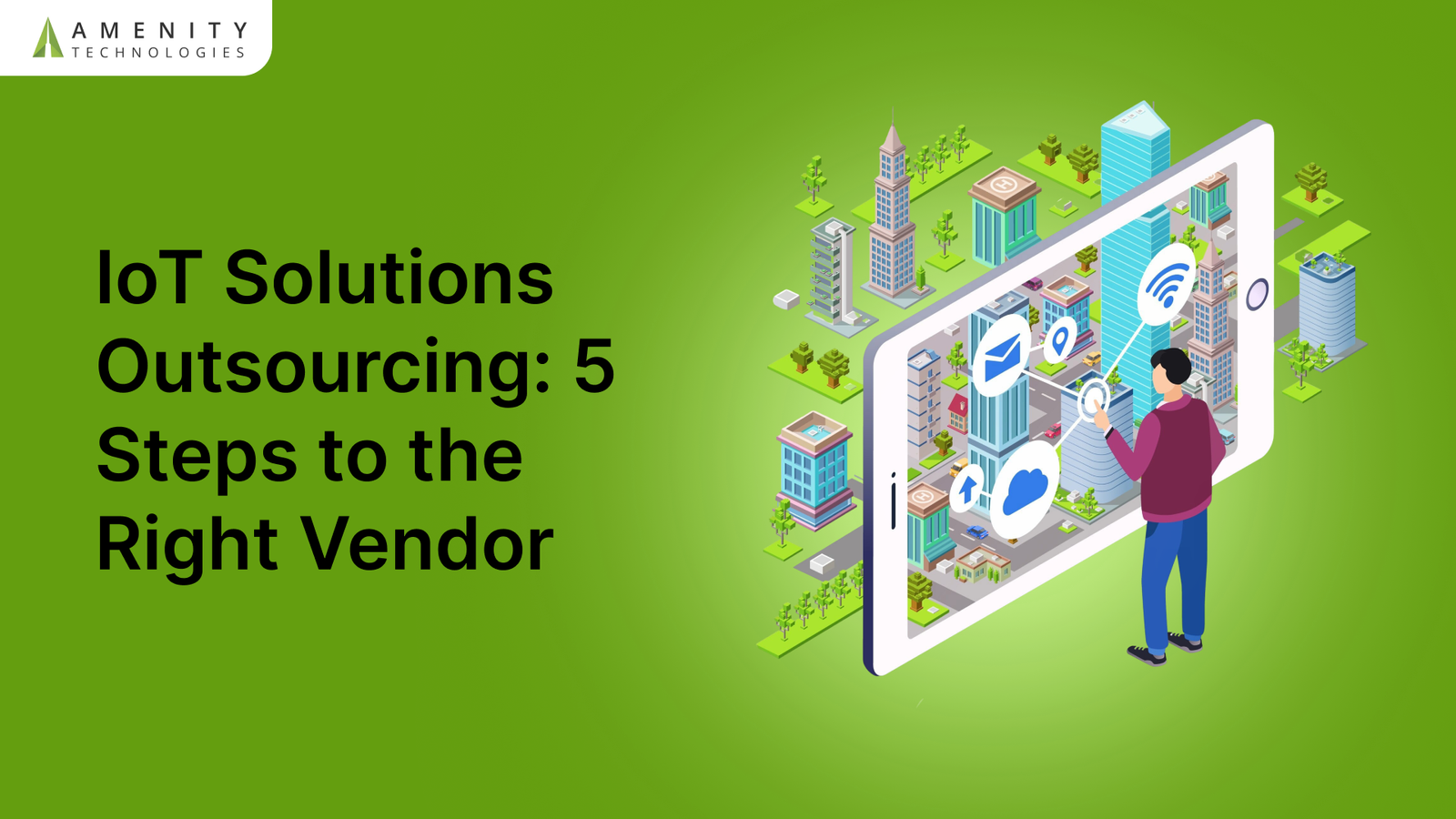Companies will spend around $1 trillion on IoT solutions by the end of 2025 as cloud-based and software-driven projects grow 20% each year. Yet about 76% of IoT pilots stall at proof of concept, and only 26% conclude successfully. How can your project avoid becoming another failed statistic?
Selecting a vendor without proper vetting may lead to delayed rollouts, security breaches, or connectivity failures. This guide lays out five practical steps to evaluate and choose an IoT partner, from defining project goals to negotiating smart contracts.
Whether deploying industrial sensors, consumer devices, or smart infrastructure, this structured process ensures reliable smart device connectivity, security, and scalability. Want to know how to protect your IoT investment and work with a trusted partner? Start here.
Step 1. Define Your IoT Requirements & Goals
Clarity at the start helps avoid poor outcomes later. Begin by outlining what the project needs to achieve and the technical boundaries within which it must operate.
1. Your End Goals
Identify what the solution must deliver. Is the focus on real-time monitoring, automating processes, or improving the customer experience? Write these outcomes clearly so vendors can align their approach with your expectations.
2. Technical Scope
List every component involved, smart sensors, data collection, analytics pipelines, storage, and cloud infrastructure. Define the required connectivity protocols (like MQTT, LTE, or NB-IoT), and highlight what systems will process the collected data.
3. Integration Needs
If the IoT system must work with existing ERP, CRM, or other legacy software, list these systems upfront. Compatibility plays a big role in smooth implementation and reduces back-end development costs later.
Clear documentation at this stage builds a strong base for choosing vendors who understand the scale and IoT customization involved.
Step 2. Set Up a Vendor Evaluation Framework
Choosing a vendor without structure leads to mismatches and underperformance. Building a scorecard gives the decision process a measurable foundation.
1. Technology Capability
Assess whether the vendor can manage the full IoT stack, from firmware and middleware to cloud and mobile integration. Look for experience with connectivity management platforms, OTA updates, and protocols like MQTT and CoAP.
2. Experience in Your Domain
Check if the vendor has delivered IoT solutions in your industry—be it logistics, healthcare, energy, or manufacturing. Domain knowledge shortens development time and improves solution relevance.
3. Security Posture
Security can’t be an afterthought. Evaluate how the vendor handles data encryption, authentication, and secure firmware updates. Compliance with GDPR or HIPAA adds another layer of assurance.
4. Resource Flexibility
Can the vendor scale their team based on project needs? Assess their ability to allocate developers, testers, and support resources on short notice for both development and outsourced IoT support.
A structured evaluation avoids poor fits and helps identify vendors capable of managing long-term smart device connectivity at scale.
Step 3. Conduct Due Diligence & Risk Assessment
Rushing into a vendor partnership without checks invites long-term failure. A thorough audit gives a clear view of the vendor’s operational depth and risk profile.
1. Audit Credentials
Check for ISO certifications, GDPR compliance, and documented proof of past work. Review published case studies that showcase their IoT solutions and success with outsourced IoT support. Confirm that their development team has relevant credentials or experience in building connectivity management platforms or smart systems.
2. Verify References
Reach out to two or three of the vendor’s previous clients. Ask about delivery timelines, communication, and issue resolution. Firsthand feedback tells more than any sales pitch.
3. Analyze Risk
Review their uptime SLAs, support structures, and contract terms. Assess the risk of IoT stack ownership disputes, data leaks, or long recovery windows after failure. Include fallback clauses to protect IP and performance.
Without due diligence, even the most promising IoT partner could compromise your smart device connectivity.
Step 4. Run a Pilot or MVP Phase
A controlled trial can save time, cost, and future headaches. Instead of committing blindly, test the waters.
1. Build an MVP
Start with a limited-use prototype. Connect 1–2 smart devices to your backend system. Focus on validating the core functionality of your IoT solutions, from sensor data transmission to analytics output.
2. Monitor Outcomes
Track performance metrics such as latency, connection stability, and data flow consistency. If you’re using a connectivity management platform, assess how easily it integrates and scales.
3. Optimize Iteratively
Review findings weekly. Use the data to fine-tune firmware, backend workflows, and cloud sync processes. Small tweaks here reduce large-scale failures later.
This phase helps confirm if the vendor delivers reliable smart device connectivity under real-world conditions. It also gives a glimpse into their ability to manage feedback and iterate, both essential for long-term success in outsourcing IoT development.
Step 5. Negotiate and Formalize the Outsourcing Contract
Once the pilot proves successful, move toward securing a formal agreement that covers all technical, operational, and legal aspects of your IoT solutions engagement.
1. SLAs
Define service level expectations clearly. Include metrics for data transfer speed, uptime reliability, incident response times, and routine maintenance. Reliable smart device connectivity depends heavily on consistent SLA enforcement.
2. Ownership Clarity
Confirm who holds rights to firmware, cloud infrastructure, data models, and source code. Many outsourced IoT support issues stem from vague IP arrangements. Get this in writing.
3. Change Management
Define how upgrades, feature changes, or tech migrations will be handled. Ensure there’s a clear process for logging and approving change requests across the IoT stack.
4. Exit Strategy
Include structured exit clauses. These should cover the return of assets, data handoff, and assistance during vendor transitions. This safeguards your interests if the vendor’s performance declines or if business priorities shift.
A strong contract protects your IoT scalability, ensures compliance, and lowers risk from day one.
How Amenity Technologies Can Help?
Amenity Technologies brings deep technical expertise in delivering end-to-end IoT solutions built for performance, reliability, and growth. The team specializes in modern protocols and device-to-cloud integration models that ensure seamless smart device connectivity across sectors like manufacturing, logistics, and healthcare.
By adopting an agile, user-focused approach, Amenity delivers rapid iterations without sacrificing quality. The company supports everything from device firmware to cloud platforms, maintaining full IoT stack ownership throughout development and post-launch phases.
Amenity also places strong emphasis on IoT security best practices, including encrypted communication, OTA updates, and GDPR-compliant data handling. Clients benefit from round-the-clock support, flexible engagement models, and a proven ability to scale with evolving project needs.
Here’s how we can help:
- Expertise in React, Node.js, and embedded IoT integrations
- Agile delivery with a focus on iterative outcomes
- Secure, scalable architecture with real-time monitoring
- Transparent pricing and structured communication
- Trusted by mid-market businesses for full-cycle execution
Conclusion
Choosing the right partner for IoT solutions outsourcing can make or break a project’s success. Following these five steps, defining clear goals, setting a thorough evaluation framework, performing detailed due diligence, running a pilot, and negotiating strong contracts, helps avoid costly mistakes.
Outsourcing works best when paired with a vendor who understands your scale, security needs, and integration complexities. This careful approach safeguards your investment and ensures smooth smart device connectivity that can grow alongside your business.
FAQs
1. How do I compare different IoT vendors effectively?
Use a structured scoring framework that assesses technology stack, domain experience, scalability, and service-level agreements. Request detailed case studies and client references to verify capabilities.
2. What’s the average duration of an IoT pilot?
Most pilots last between 4 to 8 weeks depending on device complexity, use case specifics, and integration requirements. This timeframe allows testing of reliability and data flow.
3. Should I outsource just the software or the hardware too?
If your team lacks embedded system or PCB expertise, consider outsourcing both hardware and software to one vendor for tighter integration and smoother development.
4. How can I avoid data privacy issues when outsourcing IoT?
Enforce strict policies on data residency and encryption. Clearly define data ownership and access rights within contracts to maintain control over sensitive information.
5. What happens if the vendor fails to deliver?
Include exit clauses, intellectual property rights transfer, and backup plans in the contract to ensure smooth transition and project continuity without disruption.












